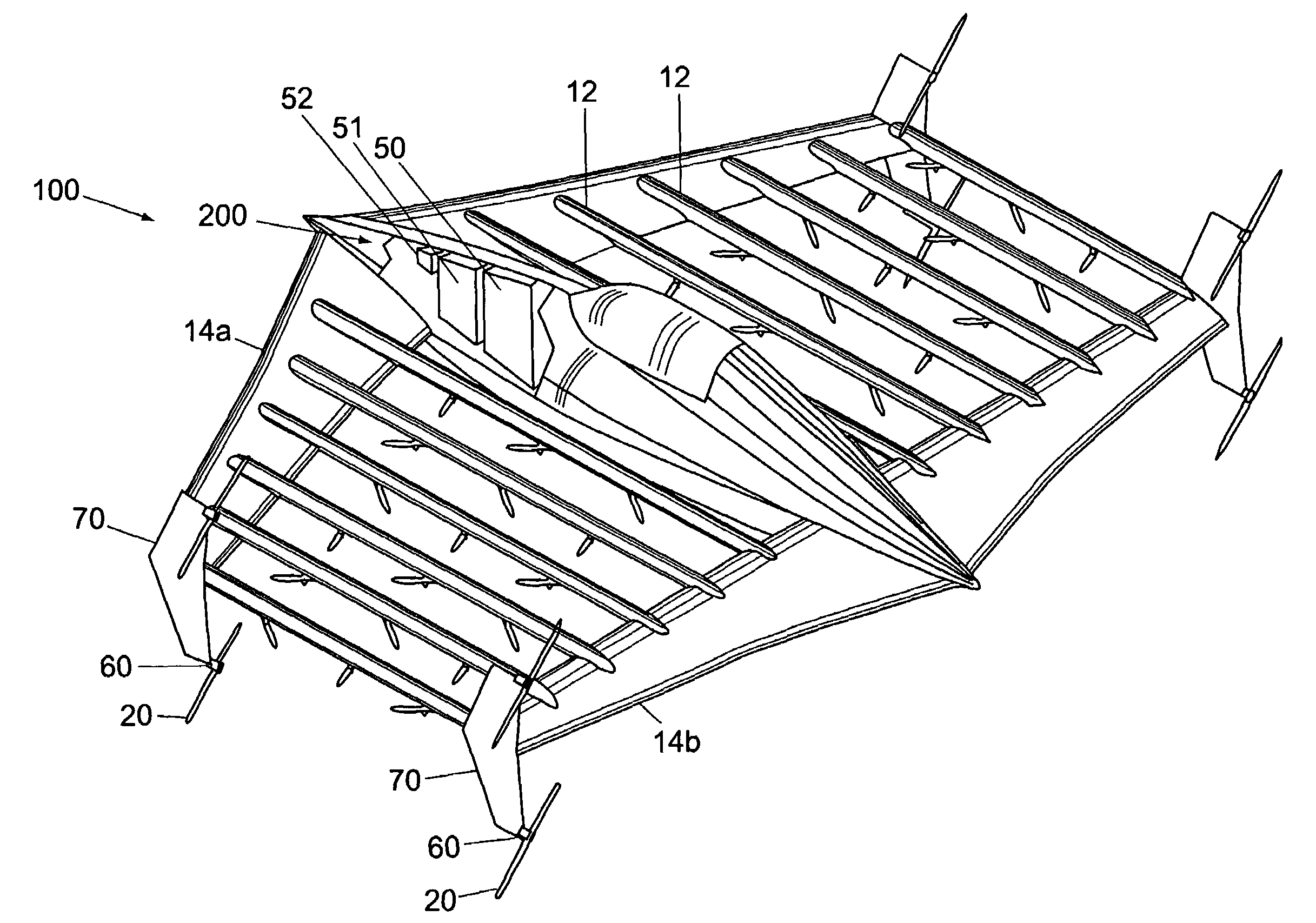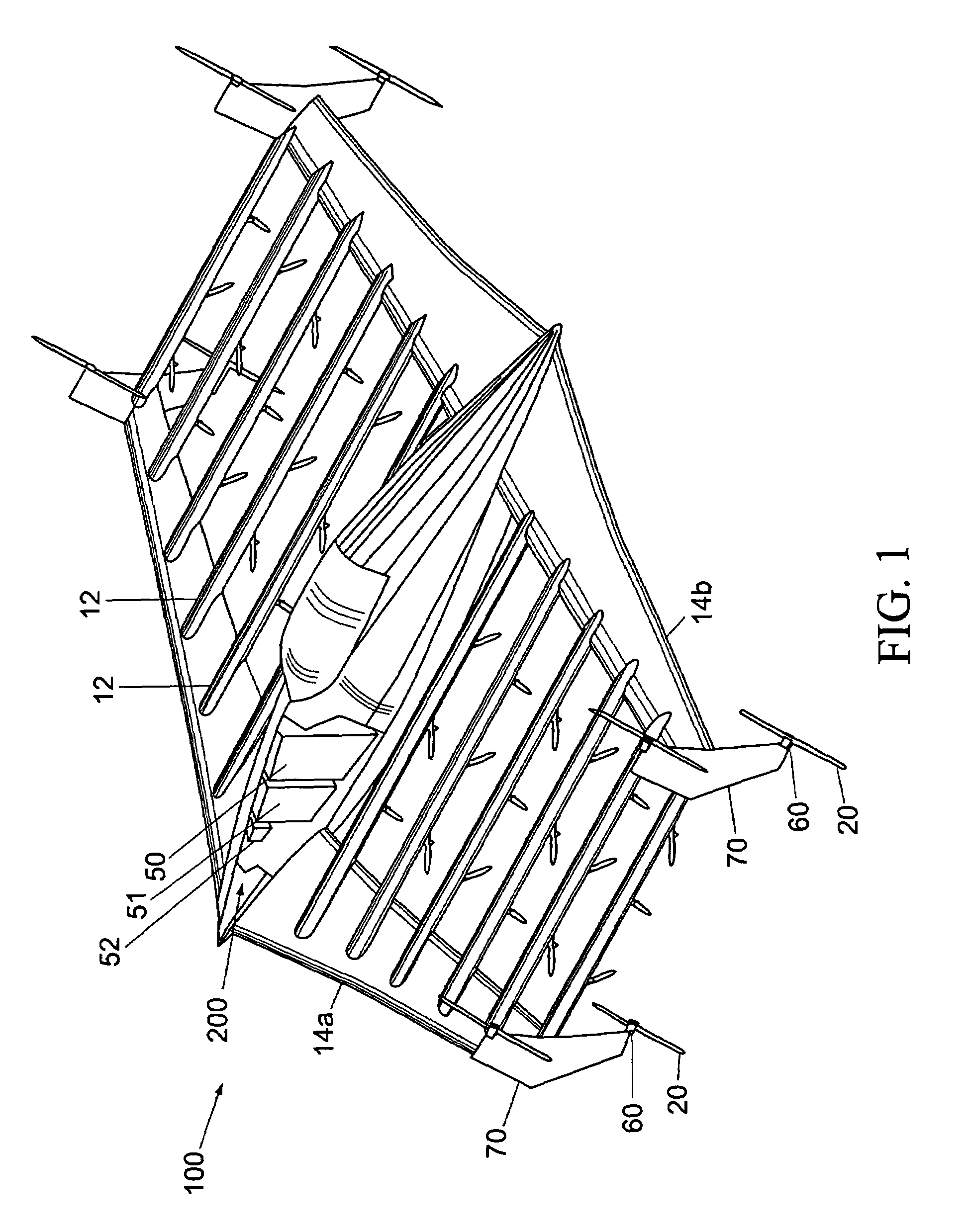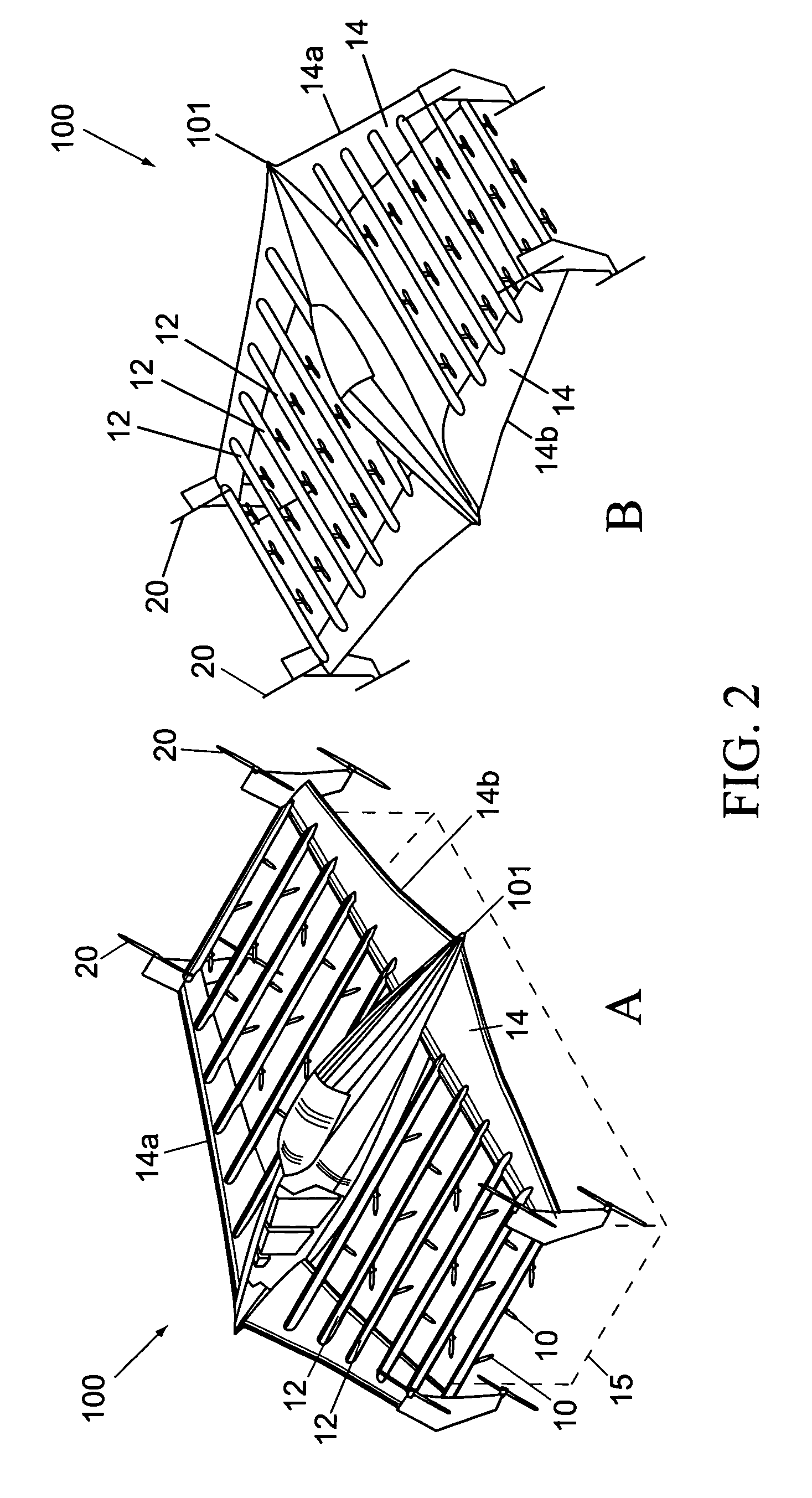Vertical take-off and landing (VTOL) aircraft with distributed thrust and control
a technology of thrust control and vertical take-off, which is applied in the direction of vertical landing/take-off aircraft, aircraft navigation control, transportation and packaging, etc., can solve the problems of tilt rotor aircraft, the complexity of the mechanical linkage of the helicopter contributes significantly to the high cost and maintenance requirements of the craft, and the forward flight speed and efficiency of the conventional helicopter is significantly inferior to that of the conventional fixed-wing aircraft. achieve the effect of high-efficiency forward fligh
- Summary
- Abstract
- Description
- Claims
- Application Information
AI Technical Summary
Benefits of technology
Problems solved by technology
Method used
Image
Examples
Embodiment Construction
[0054]Referring in combination to FIGS. 1–5, the present invention is a vertical take off and landing (VTOL) aircraft 100 that is capable of highly efficient forward flight and incorporates a unique VTOL propulsion system.
[0055]FIG. 1 is a top view of an exemplary VTOL aircraft 100 with the unique VTOL propulsion system of the present invention incorporated therein. FIG. 2 is a composite illustration showing exemplary take-off (FIG. 2A) and in-flight (FIG. 2B) configurations of the VTOL aircraft 100 of FIG. 1.
[0056]The VTOL propulsion system of the present invention is incorporated into an aircraft 100 having fuselage 200 with wings 14a–b mounted fore and aft thereon. In the preferred embodiment, the fore wing 14a is swept and cambered to create lift during forward flight. Running fore to aft from wing 14a to 14b, (i.e. parallel to the fuselage 200), are a plurality of parallel spars 12. Generally, the VTOL propulsion system of the present invention includes a plurality of distribut...
PUM
 Login to View More
Login to View More Abstract
Description
Claims
Application Information
 Login to View More
Login to View More - R&D
- Intellectual Property
- Life Sciences
- Materials
- Tech Scout
- Unparalleled Data Quality
- Higher Quality Content
- 60% Fewer Hallucinations
Browse by: Latest US Patents, China's latest patents, Technical Efficacy Thesaurus, Application Domain, Technology Topic, Popular Technical Reports.
© 2025 PatSnap. All rights reserved.Legal|Privacy policy|Modern Slavery Act Transparency Statement|Sitemap|About US| Contact US: help@patsnap.com



